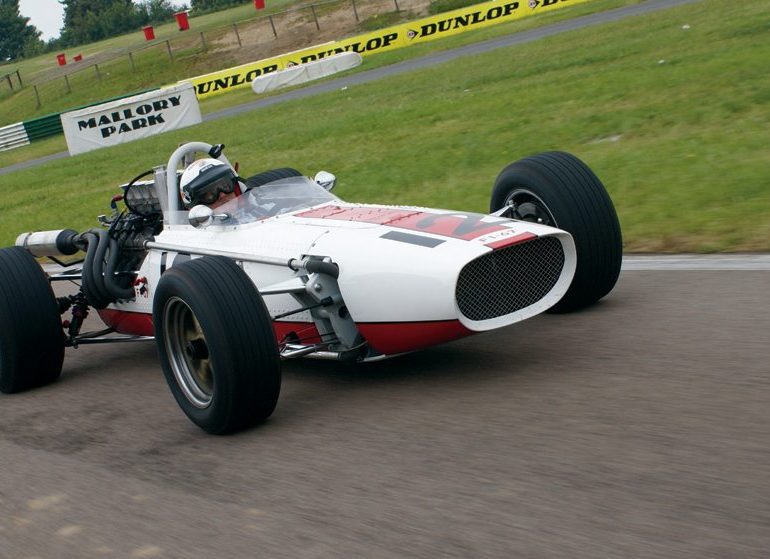F1-67 “NONDA”
Think back, if you can, to the 1950s, ’60s, ’70s and possibly even the ’80s. Did you ever think that the sports cars and single-seaters roaring around the circuits of the world would someday be about the most expensive and desirable items even the most acquisitive of us could possibly want?
Manufacturers, including Ferrari and Alfa Romeo, chopped up their second-hand racers. Jaguar pulled theirs to bits and used the parts for the next model, so many of them simply no longer exist. Grand Prix cars were raced and tested to destruction and very few went into storage or museums. There was a premium on storage space which builders didn’t have, so they just went. You and I have always said “I should have kept that…,” but would we have really paid the rental space for an old heap for 30-plus years?
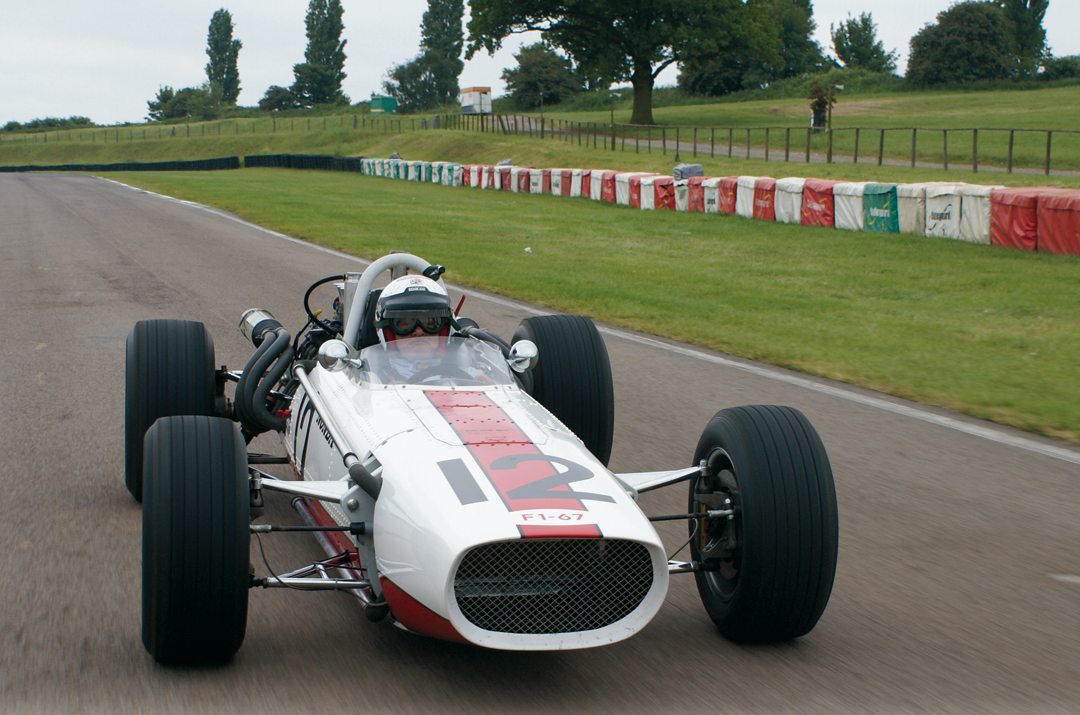
Photo: Mike Jiggle
Those are some of the factors that led to the immense increase in the value of historic cars. Historic racing became a popular sport, and almost a replacement for “contemporary” racing, and that pushed up the demand and the value. We went through the long period of debate and disdain about replicas and recreations. For many years, we bemoaned the presence of fakes, but in the last decade that debate has gone more quiet. The original cars just aren’t there, and those that are can’t be bought by ordinary mortals. It wasn’t long before sanctioning bodies such as the FIA said, more or less, “face it, if you want historic racing, new historic cars have to be built and they will get papers to say they are proper.” So, we now go to prestigious race meetings and show events, and it becomes difficult to distinguish between the original-not-significantly-changed cars and those built in recent years. And for some it no longer matters that much. It is only really important these days if someone sells you a car that they say Chris Amon drove at Le Mans in 1969, and that car was actually constructed last April. For many of us, we stop arguing when people say “this car is what it is…a reproduction of….”
In addition to what has happened in the buying/selling market, tastes have changed. There are a lot of people now who want to drive interesting, powerful, sophisticated and unusual cars but don’t or can’t race, and won’t take them on the roads. This has led to the explosion of the “track day” car market. At first, track day cars were basically anything you could make safe enough to drive quickly on a circuit. It didn’t take long for manufacturers to start producing variations of their standard models for this purpose, and then to introduce cars specifically for track use. Lotus and Lola, among others, grasped this development. Street racing and “drifting,” especially in Japan and the Far East, was another element that increased enthusiasm for cars that could be used at high speed…legally.
Taking the Trend Seriously
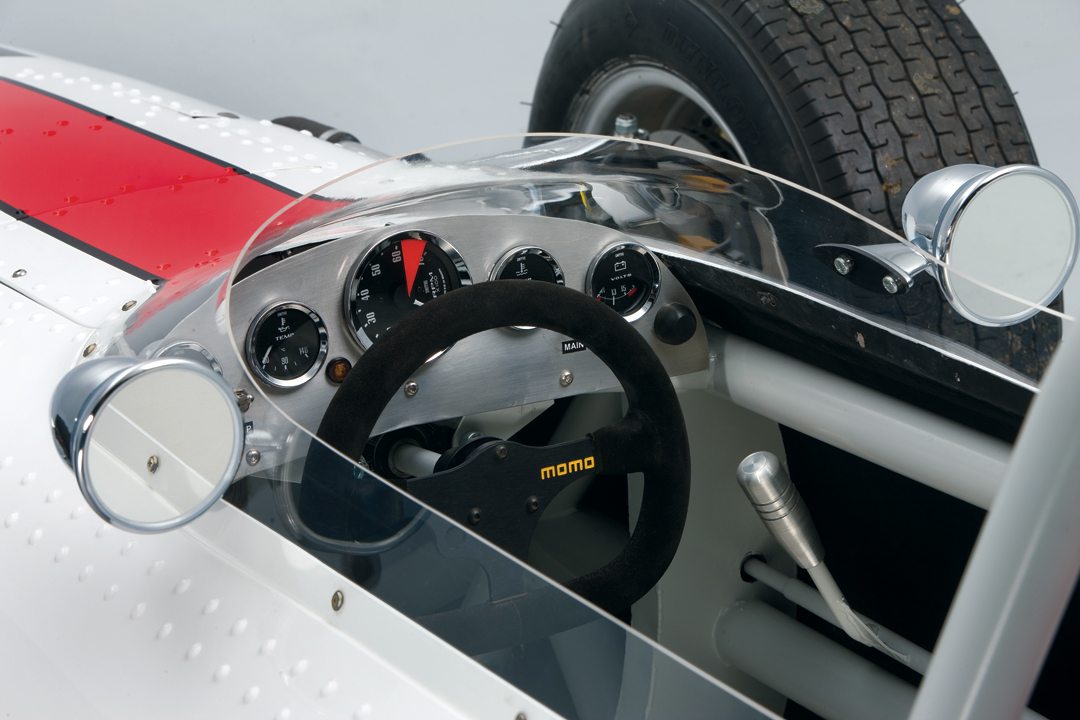
Photo: Paul Deverill
I am sitting in the paddock at the English Midlands circuit Mallory Park. I like Mallory for testing because it is short, has slow, medium and fast bends, goes left and right, up and down, and almost all the track can be seen by your team in the paddock. The Mallory staff is very helpful, and we never have a problem doing car-to-car photography during the lunch break. And, because there is always a regular test session going on, people take an interest in what you are doing. As I sat there contemplating fat Dunlop race tires having done a few warm-up laps at no more than 5000 rpm, I felt a touch guilty not having said to Ian Gray that this was my own personal test, having recently had serious eye surgery and was going to determine whether I would be able to continue this kind of thing!
it All Started…..
Believe it or not, what you see here began with Ian Gray’s purchase of a 1/12th-scale model of the Honda RA273. Ian had been involved in the British kit car market for some twelve years, and produced a number of replicas, and it was time for a new challenge, to build something from scratch that would be entirely his responsibility. He had no market objective at the time, and he built the car for himself, with the view that if there was a market it would create itself. The main driving force was the fact that 1966–’67 era was his favorite period of motorsport, when cars were not billboards and “didn’t have parts of airplanes attached to them.” It was a special period which only lasted some two years. It was a dangerous time, and as I have already said, not many cars from that era survived.
Ian Gray was one of those who realized he could never find an original, and if he did, he couldn’t afford to run it. So, he set out to design and build something from the ground up, that had the aesthetic appeal of the 1967 Honda, but mechanical elements that would run and run. For no particular reason, the 1967 Honda RA273 was his favorite, though it was sometime later that he came up with the idea that the same basic car could be supplied with a nose section from an Eagle or a Ferrari…an Eagle nose mock-up sat on the workshop shelf, and when I visited after the initial test, the car had been painted blue and had had the nose lowered.
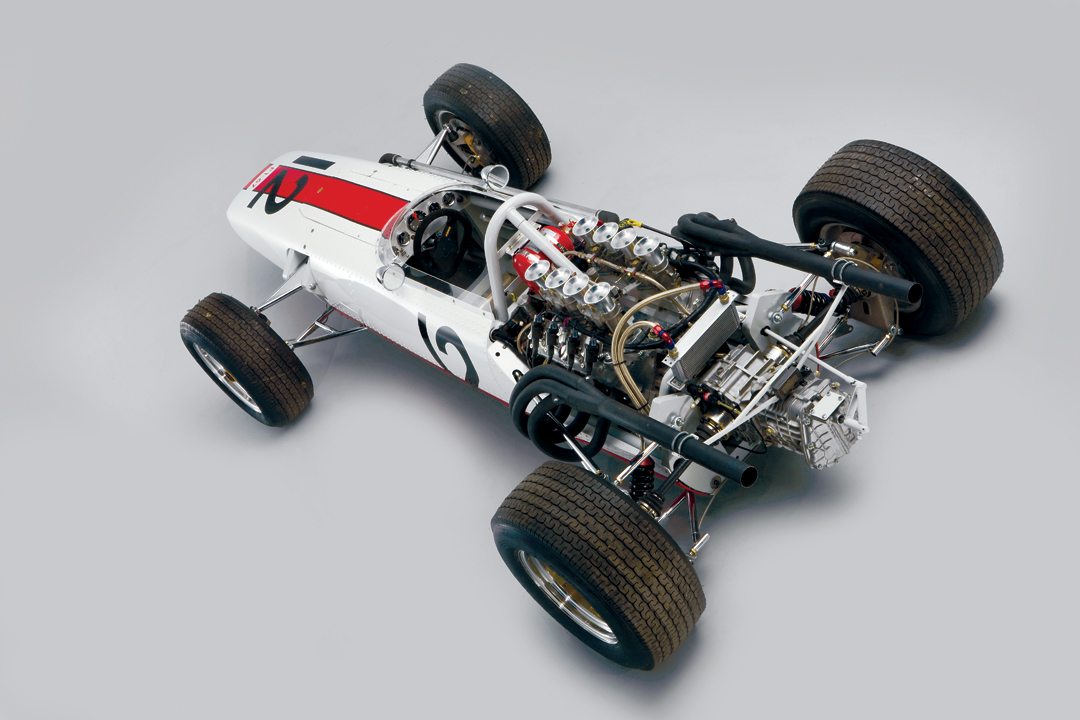
Photo: Paul Deverill
The Honda was also an inspiration as it was slightly larger than some of the others, and had more scope for getting a modern (oversized) man in. I know; I was once stuck in Todd Morici’s 1967 Ferrari seat and it took four people to haul me out!
“I got started by using the 1/12th model scaled up, on a drawing board…I work 2-D, not 3-D! I did everything on a drawing board the old way…scale up, mock up…no computer. It was originally started seven years before I actually got round to building it. Eventually, I got out of the racing and kit car side of the business completely, but the body had been moulded long before we started making the rest of it. Laminating and mould-making were out-sourced but I did everything else myself.”
Ian Gray found the engine choice easy… “it had to be a V-8. A 10 or a 12 would have been nice, but would have skyrocketed the cost.” The 5-3-liter Chevy V-8 is available, especially in the USA, it was inexpensive and it can produce 300 bhp. It had about 200 when I drove it, and the sorting out of some map sensor and timing problems means it is now about 300 bhp. It mounts very easily onto the 930 Porsche Turbo gearbox, a 4-speed with reverse, and the unit works very well and is reliable. Ian used the smallest possible engine that could produce 300 bhp without tuning or stress, and that is what he got. It came from Turn Key Engines in California. Gray had managed to achieve a potent engine for which the parts were easy to obtain, especially in the States, if they were needed.
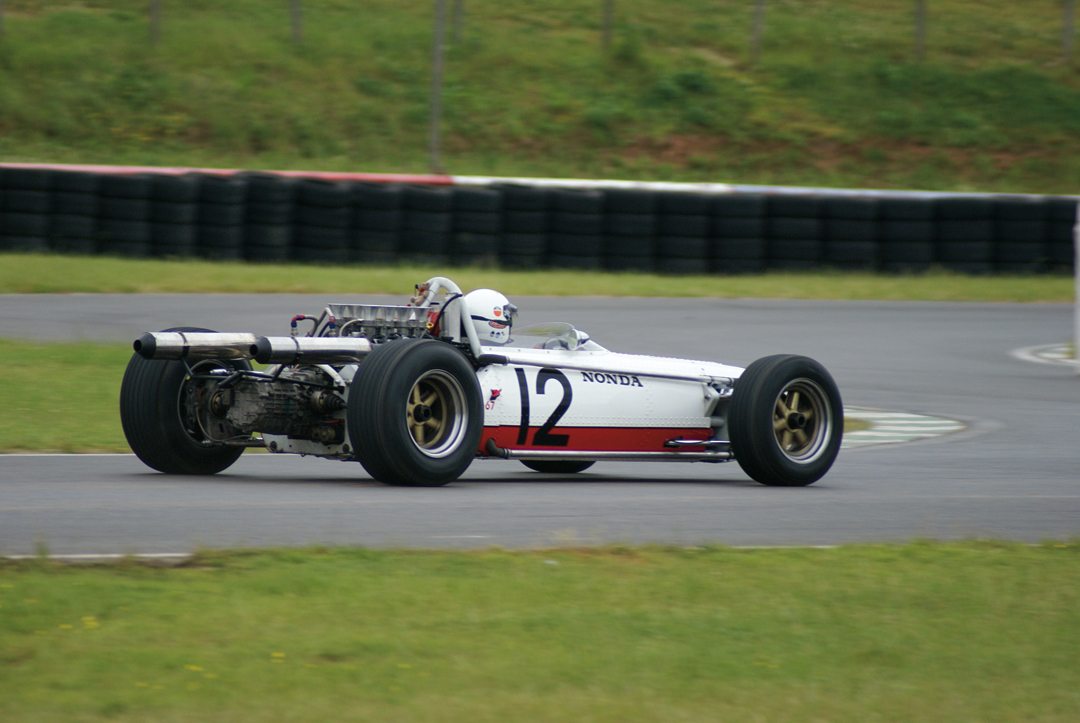
The chassis design evolved from work he had already been doing on kit cars employing laser-cut round tube with tig-welded steel box bulkheads at each end and an integral braced roll-over bar. As the car does not require all the fuel tank space of a ’67 GP machine, the chassis could be a bit larger, and made very strongly. Recent mods allow a driver up to 6-foot 4-inches tall into it, which is a far cry from the jockey-size drivers required for period cars. Gray had devised an easy means of producing a very accurate chassis for low-volume production. This had been tested on other kits cars and then was applied to the F1-67.
Ian admitted that this was not done as a business proposition. He designed and built what he wanted and liked, and relies on others having a similar feeling and passion, and wanting one of these cars, whether it is in “Nonda” trim or whatever the potential customer/driver wants for himself. The customer can have the original high-nose version as per our test, a lower profile nose, an “Eagle-type” nose, and even a color change makes a major difference to the appearance of the car. It is possible to have the car with or without rear bodywork below the exhaust as on some of the 1967 cars; “it is bespoke…you let us know what you want and we will try to make it happen.” Given the impossibility of doing this with an original F1 car for much less than a half to a million dollars, being able to take your friends to a track for a day’s entertainment having spent some $60,000 to $65,000, with a high reliability factor, looks pretty attractive.
Though Ian won’t admit this, his careful design, planning and execution meant the car worked pretty well right out of the box. He had gone over the design issues so many times in his head over the years, that the fundamentals were clear when it came time to build. Ian says, “when I drove it first time at Mallory, it took 200 yards to know it was right. Having not driven this type of car before, I was convinced it might try to kill me the first time, but in fact it was exactly the opposite. We have ended up with a very safe car that you can give to a relatively inexperienced driver with some confidence. It’s possible to lower the revs and run it with less power, but it really works well as it is on 300 bhp. What I never wanted to do was have a beast of a car that would scare people.”
Driving the f1-67
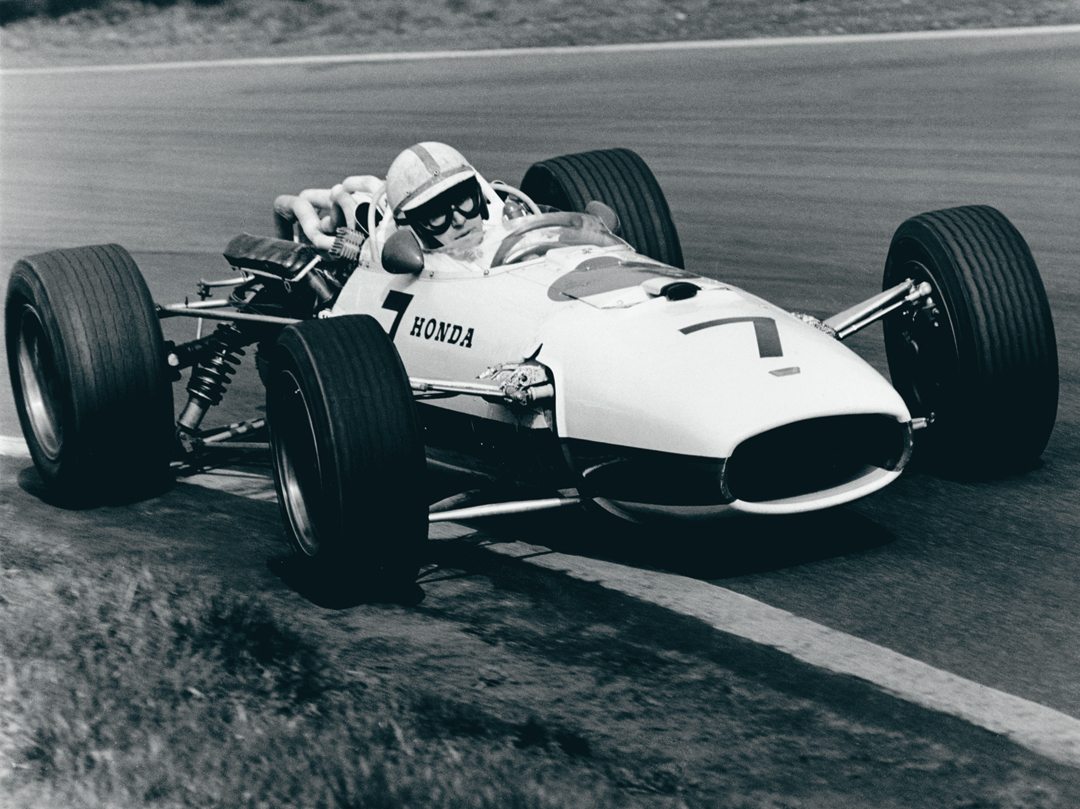
I have, like Ian, been a fan of the 1967-period Grand Prix cars for some time, and while working on a still to be completed book on the cars of that year, I have managed to get behind the wheel of some very impressive machines which you will have seen in Vintage Racecar. These include the ex-Amon Ferrari 312, the Brabham/Hulme Brabham BT24-Repco, Dan Gurney’s Eagle-Weslake, the BRM H16 and the Lotus 49. Of the main team cars running that season, that left only the Cooper-Maserati…and the Honda. After several years of trying to negotiate a Honda test, this goal has still not been achieved.
So, what a surprise it was to come along to Mallory and arrive in the paddock and get a profile view of something very similar to the Japanese company’s 1967 mainstay, the RA273. While that car was overweight and not particularly competitive, it still had a gutsy feel to it, and it was clear that Honda had the potential to do something significant. At the end of the year, John Surtees had prevailed on Honda to build a new car, essentially a Lola chassis, which was known as the “Hondola.” That new RA300 won the first time out at Monza, but the next model, the RA301, wasn’t so good. Then came the air-cooled V-8 RA302 that had a disastrous time, with Jo Schlesser being tragically killed in it at the 1968 French Grand Prix.
However, I knew this wasn’t a 1967 Grand Prix car, but I didn’t know just how good it was going to be. The initial laps were about getting the feel of the machine, using only third gear, except for Mallory’s hairpin at the top of the hill. The Dunlops had lots of grip, and looked right as well. After a stop to check and make sure everything was OK, it became a proper test session. As it happened, I could see despite my surgury, which was encouraging and important because Mallory’s fast right-hander at the end of the straight is tricky and you need to get the power down to make the most of the back straight. With familiarity, the Esses could be taken in third or fourth. There is enough torque from the engine to get the car moving quickly to the top of the hill. In traffic, you would probably opt for third, especially if you weren’t on the best line.
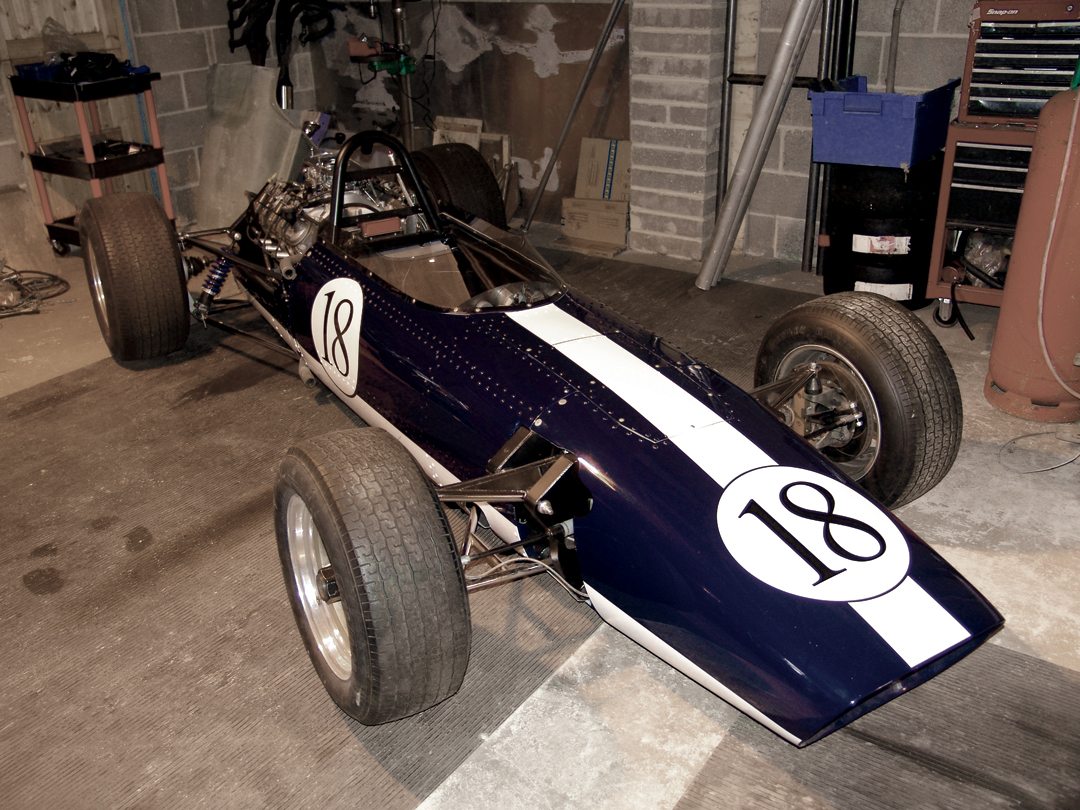
It was clear early on that the car had real merit as a track day machine, especially for those wanting to learn how to make good use of prodigious power. Ian said the car might squat at the rear if you came onto the power hard out of a corner, and I found that was true in second gear at the hairpin, but it didn’t take long to find just how to exit that corner with the greatest efficiency. Mallory is a place where you build up speed very quickly going up the box, through the downhill left-hand kink and onto the main straight. You need to have total confidence in a big car to keep your foot down through that blind kink as you sweep out to the right. If you lift, you lose time and people will pass you on the straight. The responsiveness of the F1-67 Nonda was rewarding…you could feel the grip and turn that into a faster entry to the straight on each succeeding lap. The handling was neutral and I was just beginning to get it to drift, though an errant screwdriver on the floor and a very slight problem sighting through the Perspex screen encouraged me to back off a bit and try again later!
What was impressive, and thus ideal for the person wanting an above average performance track car, was the fact that you could use the power and manage it, and feel safe all the while. The car is and feels strong, such is the build quality, all part of Ian’s intent from the very beginning. Many owners of this car would want to extend their experience to competition, and this is great for sprints and hillclimbs, and will now get into a range of “Libre” races.
My next session was interesting. Tim Gray, no relation, a racing friend of Ian’s, was also doing some of the driving and he came in to say that there was a vibration. There was a suspicion it might have been the result of a slight incident at a previous test with a bent wishbone. Track days are about learning, not only about your ability but about the car, and how to get the most out of it. I realized that, in fact, the vibration was coming from the gearshift lever, which was loose, so a quick stop duly sorted that out. That provided the confidence to go deeper into the corners and make more use of the brakes. You aren’t on the brakes very much at Mallory except for the hairpin, so they have to be spot-on and just right at the critical places where you need them. We changed the brake bias accordingly, and the Nonda was then really getting into a rhythm, partly helped by the rather spectacular noise from the V-8 behind me! The braking system was carried over from practice on high-end replicas. Essentially the brakes are AP brakes for a GT40, with some mods to the calipers for a much lighter car, but it was existing and proven brake technology that was transferred to this car.
As the car and driver settled into this nice rhythm, more time was spent in fourth gear and I saw 5000 rpm in fourth on the pit straight which is about 150 mph, while entry to the Esses in third was close to 120 mph. The car has grunt and torque, but it is all usable. I was, I think, a bit surprised at how smoothly the car could be driven, even when you started to press on harder and began to get closer to the limits of braking, especially in the hairpin. I know I had recently tried a purpose-built track car by a major racecar manufacturer and was told “don’t lift in the corners,” which is terrifying when you are driving a car for the first time. The Nonda however just had bags of feel, predictable to a fault. I was seriously beginning to think about how nice it would be to race or do hillclimbs with it, given how manageable it was.
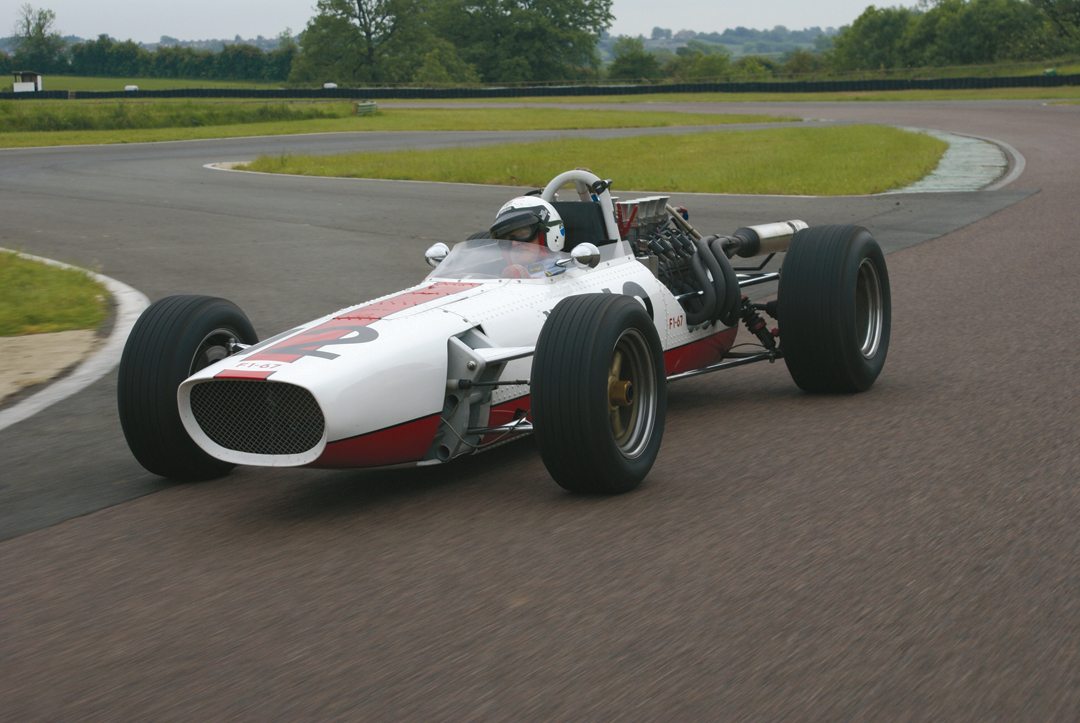
In a final session I felt I needed to answer a key question: could a driver get the most out of a car like this at a track day event, without days and days of endless testing? The only way to answer that was to use more revs, go in deeper, brake later, get on the power earlier and keep those revs up all the time. Ian himself went out again, and we then gave it a bit more rear brake bias, and raised the rev limit to closer to 6000 rpm. The engine was running flawlessly and this was still quite safe. In fact, I didn’t have to push F1-67 that hard to improve the performance. The brakes were working well and a dab at the Esses meant you could really steam through there and up to the hairpin, braking late again while still keeping some throttle on and sliding it ’round in one smooth, seamless motion. It was now 5500 rpm through the kink, which really shot it down the straight. Less braking at the end and skating around in fourth onto the back straight, just aware of the lake on the right, slipping between two F3 cars and flying through the Esses. It was a very “learnable” car…all that in relatively few laps. The brake balance could still do with more tweaking and a rear anti-roll bar would help to make the back end stiffer, but the interesting thing was that these were all things you began to feel with this car.
The lesson was that you could run this car, with very few things going wrong, and you did not need a high-tech laboratory to help you do it. For a track day car, that’s pretty important. This 5.7-liter Chevy engine was producing some 200 bhp in our first test and that has now been increased by 100 bhp with the mapping issue sorted. In retrospect, Ian said it was good to start at 200 and get used to it, and now it still runs very well with no strain.
For my last run, the aim was to see if we could spend more time in top gear, and test the high-speed potential. At 5400 rpm at the end of the straight, it was doing some 165 mph. The first time the front end “washed out” a bit, but next time it just held the line and pulled and pulled ’round the long Gerards right-hander after a very quick lift-and-dab, holding fourth all the way down the back and through the Esses. Now that was exciting, letting the car have its head, but it meant you were in the hairpin sooner, and holding down some throttle while braking became a more skilled operation. That took some work, but created a real sense of achievement. Flying out of the hairpin at maximum revs, getting to the kink at top revs, and launching down the front straight…well, it was like being a racing driver…a great thrill. I think drivers will want this.
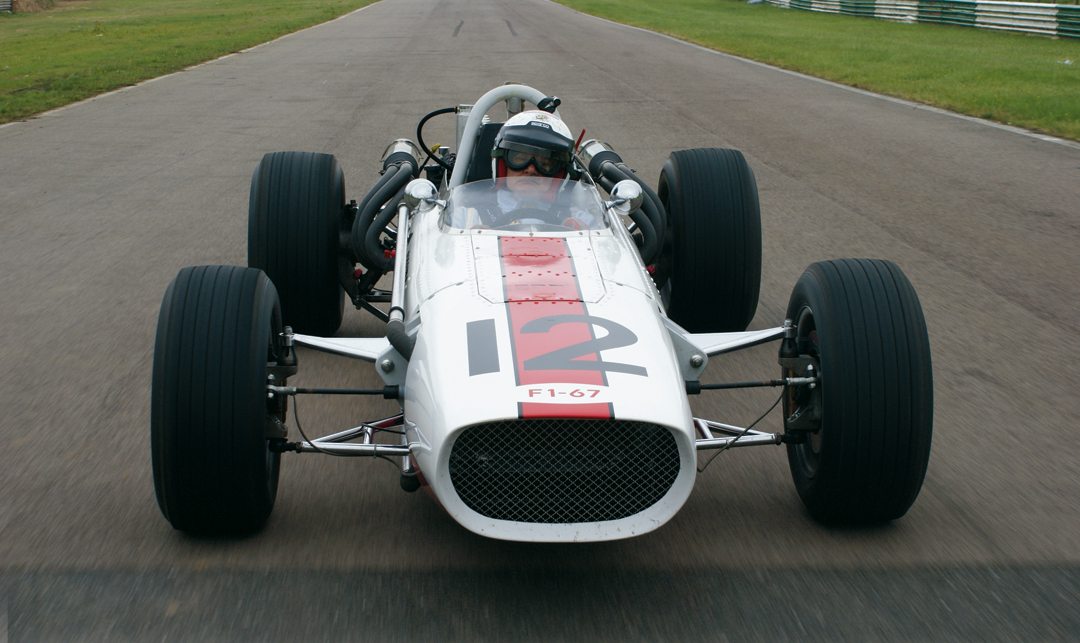
SPECIFICATIONS
Chassis: Laser-cut tube with tig-welded box bulkheads, integral braced roll-over bar
Body: Fiberglass, gel-coated seven-piece bodywork, aluminum body option
Suspension: Front: Double wishbones, inboard coilover springs. Rear: Trailing arms, inboard coilover springs
Wheelbase: 100 inches
Weight: 650 kilograms / 295 pounds Track: 59 inches front and rear
Engine: Chevy V-8 5.3-liter all-aluminium block with quad downdraft Weber carbs on billet inlet, 300+ bhp @5000 rpm
Ignition: MSD unit
Gearbox: Porsche 930 Turbo 4-speed + reverse
Brakes: AP Racing 4-pot calipers
Tires: Dunlop Racing CR65
Price: £42,000 ex-works UK
Resources
Many thanks to Ian Gray for his help and enthusiasm, and the opportunity to have a full day’s running at Mallory Park.
www.F1-67.com


